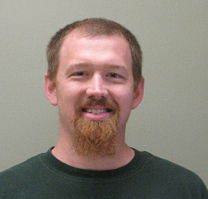
As you can tell from the title, there has been a good bit of activity at STARworks since I last posted. Let's start with the tanks in the biofuels area.
So, the old tank farm of the sock mill is where we are going to make biodiesel in the near future. Before
Piedmont Biofuels can install the production infrastructure, we have to pull out three 6400 gallon plastic tanks. They are 10 feet in diameter and at least as tall. Check the picture above to better illustrate.
We were going to hire someone to remove the tanks by crane, removing the roof of the building, but that was going to cost a pretty penny. The tanks aren't worth much money now, so I decided to try removing them with our Baker forklift. After much gnashing of teeth, wriggling around and pulling on a tank, we finally got one out. Here's the spot where it used to exist in the building.
Many thanks to my Dad, Bill Moore, Santiago and Takuro from next door in ceramics for all the help in getting the tank out and onto Bill's trailer. I have two more tanks to remove, but I hope they will be easier now that we've done it once and have more room in the space .

Here are the other tanks that need to be removed, actually the ones on the left and right. The tank in the center with the ladder against it will be cleaned and modified to hold finished fuel and will have a fuel pump and meter installed. Let's walk outside biodiesel and see what is happening with the deck around the corner.
Lee Hudson, a local contractor that has helped us out many times in the past with other construction projects, agreed to take on this most recent task: to build a series of ramps and decks to serve as an entrance into the Nick's glass studio. The studio is where students from area community colleges, local artists and anyone generally interested in learning about blowing glass come to learn from Nick and others. Here's what the back of the building looked like before Lee and his crews went to work.
In the past several weeks they have been getting various aspects of the decks and ramps completed, and now its almost done! The "country red" metal roofing arrived from Triad Metals' Asheboro warehouse yesterday afternoon and should be installed soon.
This is how the deck project looks as of today.

We anticipate that the deck will be used quite a bit starting in the near future. Nick will have some classes in glass blowing offered through Montgomery Community College in the fall. Additionally, there will be an open house in the fall. Check
Nick's website here for more information.
UPDATE! The roof on the deck is finished... and it looks great! Here are a couple of pics I snapped a little bit ago. Someone remarked that the series of ramps reminded him of the line for an amusment park ride. Well, we do have a lot of fun here in Star.


Finally, we were all excited to get some new bikes from
Middle Ring Cycles over in Albemarle. Check out the pictures below as we try out the bicycles at STARworks.
Brian's truck and trailer with one of the new bikes next to it.

The bikes in the front entrance area.

Here are some action shots of folks riding around the trail.































